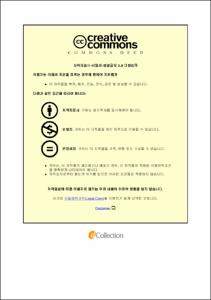수산식품 신제품개발의 성과에 관한 실증연구
- Abstract
- The purpose of this study is to find out key factors affecting the performance of NPD and present strategic implications of NPD for domestic manufacturers that develop seafood products. In this study, the causal relationship and degree of influence among the factors influencing the performance of the new product development were empirically analyzed. This study conducted two surveys. The first survey identified the status of seafood NPD in the population(N=302). The survey showed more than 30% of companies developed new products. The second survey was conducted using a structured questionnaire. The empirical analysis used statistical programs for the collected measurement data(N=208).
H1(P→A) & H2(P→O) was adopted. Property of products(P) has a positive(+) effect on competitive advantage(A) and opportunity creation(O). The results suggest that a new seafood product that is more novel and innovative in product quality and design and more environmentally friendly for raw materials, processing, and packaging has a competitive advantage over competitors. In particular, the novelty and innovation of a new product has positive impacts on creating new opportunities such as new markets and technologies. H3(K→A) & H4(K→O) was adopted. Knowledge(K) has a positive(+) effect A and O. This result indicates that superior price competitiveness compared to competitors as competitors rare high knowledge of new products and superior quality in processing, packing and R&D. In particular, the path coefficient, which is the influencing factor between K and O, is the highest all the coefficients of this research model. This means that the Knowledge(K) has a greater impact on new market developments and technology acquisitions than other pathways. H5(I→A) & H6(I→O) was adopted. Involvement(I) has meaningful and positive impacts on Advantage(A) and Opportunity(O). These results indicate that higher participation levels, such by retailers and suppliers, have a positive impact on the competitiveness of new products, quality and price competitiveness. In particular, retailers are proxy indicators for understanding the diverse needs of consumers. Because they allocates sales space for new products, it is necessary to induce active participation by retailers in seafood NPD. H7(A→R) and H8(O→R) was adopted. Competitive advantage(A) and opportunity creation(O) have a significant and positive impact on the performance of NPD. The results indicate that securing a discriminatory competitive advantage over competitors has a positive impact on the performance of NPD. In particular, the competitive advantage of quality and price has a positive impact on NPD, such as profitability, sales and market share of new products.
Finally, we analyzed the relationship between Competitive Advantage(A), Opportunity Creation(O) variables and NPD performance based on Market Entry Order(E). First of all, it was revealed that the impact of a new product's competitive edge on the performance of NPD varies according to the order of entry into markets. This means that in terms of the performance of the new product development, the “Free-ride Effect” of late entry(LE) is greater than the “Market-first Effect” of early entry(EE). However, it was found that there is no difference between LE and EE in the effect of adjusting(A→R, O→R) the performance of NPD.
NPD is also becoming one of the major research areas in field of marketing research, in Korea. In particular, research on the performance of food NPD has been carried out actively around Europe. However, there are only a limited number of studies on the performance of food NPD conducted in Korea, and there is no research on seafood industry or seafood NPD. In this regard, the study derived the success factors of NPD through various research in literature. It is also the first study on the performance of seafood NPD.
- Issued Date
- 2019
- Awarded Date
- 2019. 2
- Type
- Dissertation
- Keyword
- Performance of seafood NPD* Property․Knowledge․Involvement of new products Competitive advantage Opportunity Creation.
- Publisher
- 부경대학교
- Affiliation
- 부경대학교 대학원
- Department
- 대학원 해양수산경영학과
- Advisor
- 장영수
- Table Of Contents
- 제1장 서론 1
제1절 연구배경 및 목적 1
1. 연구배경 및 필요성 1
2. 연구의 목적 5
제2절 연구방법 및 구성 6
제2장 이론적 고찰 9
제1절 신제품개발의 이론적 배경 9
1. 신제품의 개념 및 특성 9
2. 신제품개발 전략 및 프로세스 12
3. 신제품개발의 주요 성공요인 16
제2절 식품 신제품개발의 이론적 배경 19
1. 식품산업 및 소비특성 19
2. 식품 신제품개발 전략 및 프로세스 23
3. 식품 신제품개발의 선행연구 35
4. 식품 신제품개발의 주요 성공요인 43
제3절 신제품개발 성과에 관한 고찰 61
1. 신제품개발 성과에 관한 선행연구 61
2. 신제품개발 성과척도 63
제3장 연구의 설계 67
제1절 연구모형 설계 67
제2절 연구가설 설정 69
1. 제품특성과 경쟁우위 및 기회창출 관계 69
2. 지식수준과 경쟁우위 및 기회창출 관계 70
3. 참여수준과 경쟁우위 및 기회창출 관계 72
4. 경쟁우위, 기회창출과 신제품성과 관계 74
5. 시장진입순서의 조절효과 75
제3절 변수의 정의 및 측정도구 설계 77
1. 변수의 조작적 정의 및 측정 77
2. 측정도구 구성 84
제4장 실증분석 87
제1절 수산식품산업 현황 87
1. 국내 식품산업 특성 87
2. 수산식품산업 현황 88
제2절 자료수집 및 분석방법 91
1. 표본특성 및 자료수집 91
2. 표본구성 및 분석방법 97
3. 표본의 기술통계량 101
제3절 신뢰성 및 적합성 분석 106
1. 측정항목 신뢰성 106
2. 표본수 적합성 108
3. 표본자료 적합성 109
제4절 확인적 요인분석 111
1. 단일요인 확인적 요인분석 111
2. 전체요인 확인적 요인분석 115
3. 상관관계 분석 121
제5절 구조방정식모형 분석 및 가설검증 123
1. 모형적합도 분석 123
2. 연구가설 검증 126
3. 조절효과 가설검증 135
제5장 결론 및 시사점 139
제1절 연구요약 및 결론 139
제2절 연구의 시사점 145
제3절 연구의 한계 및 향후 연구방향 147
149
측정도구: 설문지 165
- Degree
- Doctor
- Files in This Item:
-
-
Download
 수산식품 신제품개발의 성과에 관한 실증연구.pdf
기타 데이터 / 1.38 MB / Adobe PDF
수산식품 신제품개발의 성과에 관한 실증연구.pdf
기타 데이터 / 1.38 MB / Adobe PDF
-
Items in Repository are protected by copyright, with all rights reserved, unless otherwise indicated.